D and E are points on the sides AB and AC respectively of a $\triangle\text{ABC}.$ In the following cases, determine whether DE || BC or not.
AD = 5.7cm, DB = 9.5cm, AE = 4.8cm and EC = 8cm.
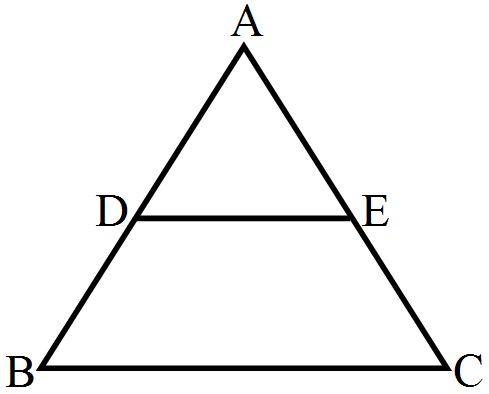
AD = 5.7cm, DB = 9.5cm, AE = 4.8cm and EC = 8cm.

We have:
$\frac{\text{AD}}{\text{DB}}=\frac{5.7}{9.5}=0.6\text{cm}$
$\frac{\text{AE}}{\text{EC}}=\frac{4.8}{8}=0.6\text{cm}$
Hence, $\frac{\text{AD}}{\text{DB}}=\frac{\text{AE}}{\text{EC}}$
Applying the converse of Thalse' theorem, we conclude thet DE || BC.
$\frac{\text{AD}}{\text{DB}}=\frac{5.7}{9.5}=0.6\text{cm}$
$\frac{\text{AE}}{\text{EC}}=\frac{4.8}{8}=0.6\text{cm}$
Hence, $\frac{\text{AD}}{\text{DB}}=\frac{\text{AE}}{\text{EC}}$
Applying the converse of Thalse' theorem, we conclude thet DE || BC.
Download our appand get started for free
Experience the future of education. Simply download our apps or reach out to us for more information. Let's shape the future of learning together!No signup needed.*
Similar Questions
- 1D and E are points on the sides AB and AC respectively of a $\triangle\text{ABC}$ such that DE || BC:View Solution
AD = (7x - 4)cm, AE = (5x - 2)cm, DB = (3x + 4)cm and EC = 3x cm.
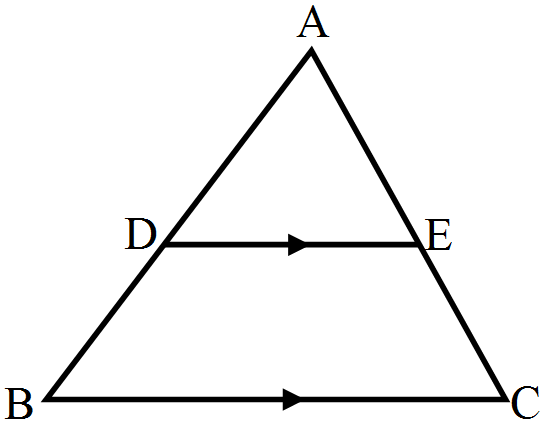
- 2$\triangle\text{ABC}\sim\triangle\text{DEF}$ such that $\text{ar}(\triangle\text{ABC})=64\text{cm}^2$ and $\text{ar}(\triangle\text{DEF})=169\text{cm}^2.$ If BC = 4cm, find EF.View Solution
- 3View SolutionState the two properties which are necessary for given two triangles to be similar.
- 4D and E are points on the sides AB and AC respectively of a $\triangle\text{ABC}$ such that DE || BC: If $\frac{\text{AD}}{\text{AB}}=\frac{8}{15}$ and EC = 3.5cm, find AE.View Solution
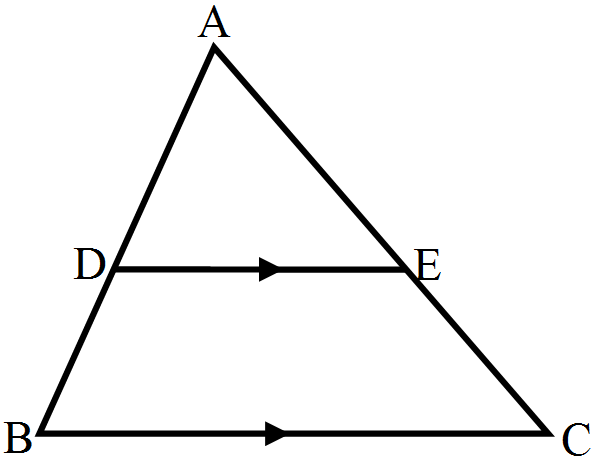
- 5View SolutionIn the given figure, DE || BC such that AD = x cm, DB = (3x + 4)cm, AE = (x + 3)cm and EC = (3x + 19)cm. Find the value of x.
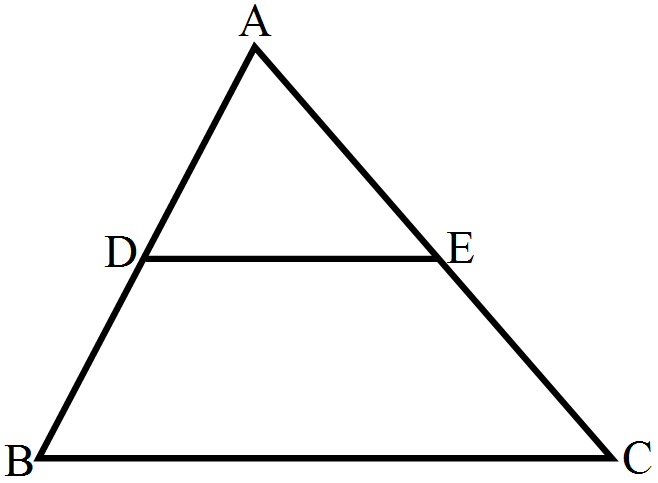
- 6View SolutionThe sides of certain triangles are given below. Determine them are right triangles:
9cm, 16cm, 18cm. - 7A guy wire attached to a vertical pole of height $18\ m$ is $24\ m$ long and has a stake attached to the other end.View Solution
How far from the base of the pole should the stake be driven so that the wire will be taut? - 8D and E are points on the sides AB and AC respectively of a $\triangle\text{ABC}.$ In the following cases, determine whether DE || BC or not. AD = 7.2cm, AE = 6.4cm, AB = 12cm and AC = 10cm.View Solution
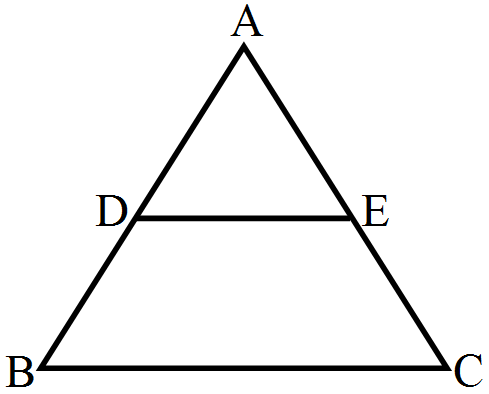
- 9View SolutionABCD is a quadrilateral in which AD = BC. If P, Q, R, S be the midpoints of AB, AC, CD and BD respectively, show that PQRS is a rhombus.
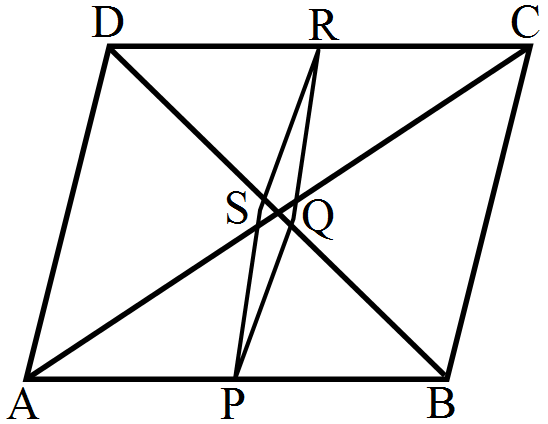
- 10View SolutionThe sides of certain triangles are given below. Determine them are right triangles:
1.4cm, 4.8cm, 5cm.
